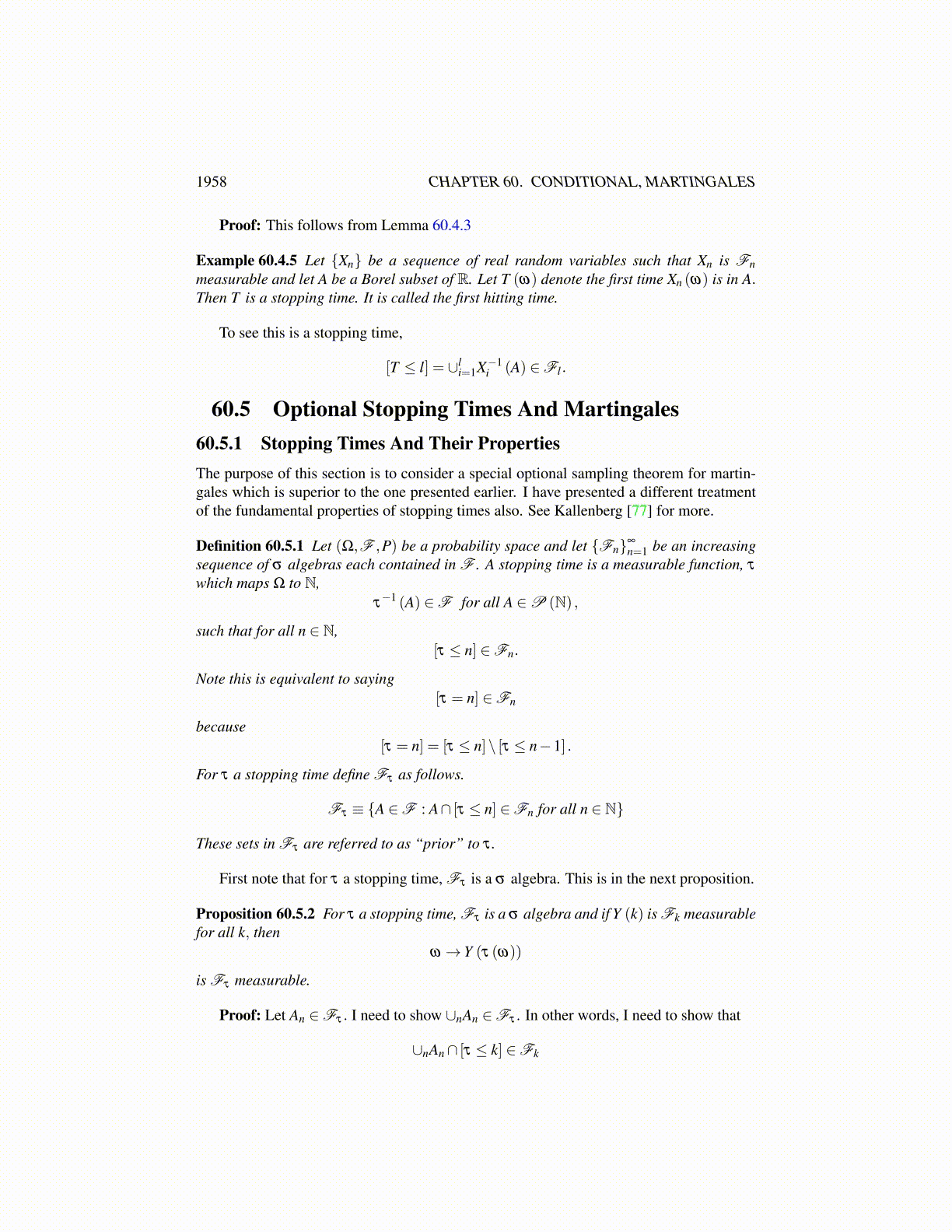
1958 CHAPTER 60. CONDITIONAL, MARTINGALES
Proof: I will prove the case where {Xn} is a submartingale and note the other case willonly involve replacing ≥ with =. First recall that from Lemma 60.4.1 FS ⊆FT . Also letm be an upper bound for T . Then it follows from this that
E (|XT |) =m
∑i=1
∫[T=i]|Xi|dP < ∞
with a similar formula holding for E (|XS|). Thus it makes sense to speak of E (XT |FS) .I need to show that if B ∈FS, so that B∩ [S≤ n] ∈Fn for all n, then∫
BXT dP≡
∫B
E (XT |FS)dP≥∫
BXSdP. (60.4.8)
It suffices to do this for B of the special form
B = A∩ [S = i]
because if this is done, then the result follows from summing over all possible values of S.Note that if B = A∩ [S = m] , then XT = XS = Xm and there is nothing to prove in 60.4.8 soit can be assumed i≤ m−1. Then let B be of this form.∫
A∩[S=i]XT dP =
m
∑j=i
∫A∩[S=i]∩[T= j]
XT dP
=m−1
∑j=i
∫A∩[S=i]∩[T= j]
XT dP+∫
A∩[S=i]∩[T≥m]XmdP
And so ∫A∩[S=i]
XT dP =m−1
∑j=i
∫A∩[S=i]∩[T= j]
XT dP+∫
A∩[S=i]∩[T≥m]XmdP (60.4.9)
=m−1
∑j=i
∫A∩[S=i]∩[T= j]
XT dP+∫
A∩[S=i]∩[T≤m−1]CXmdP
≥m−1
∑j=i
∫A∩[S=i]∩[T= j]
XT dP+∫
A∩[S=i]∩[T≤m−1]CXm−1dP
=m−1
∑j=i
∫A∩[S=i]∩[T= j]
XT dP+∫
A∩[S=i]∩[T>m−1]Xm−1dP
provided m−1≥ i because {Xn} is a submartingale and
A∩ [S = i]∩ [T ≤ m−1]C ∈Fm−1
Now combine the top term of the sum with the term on the right to obtain
=m−2
∑j=i
∫A∩[S=i]∩[T= j]
XT dP+∫
A∩[S=i]∩[T≥m−1]Xm−1dP